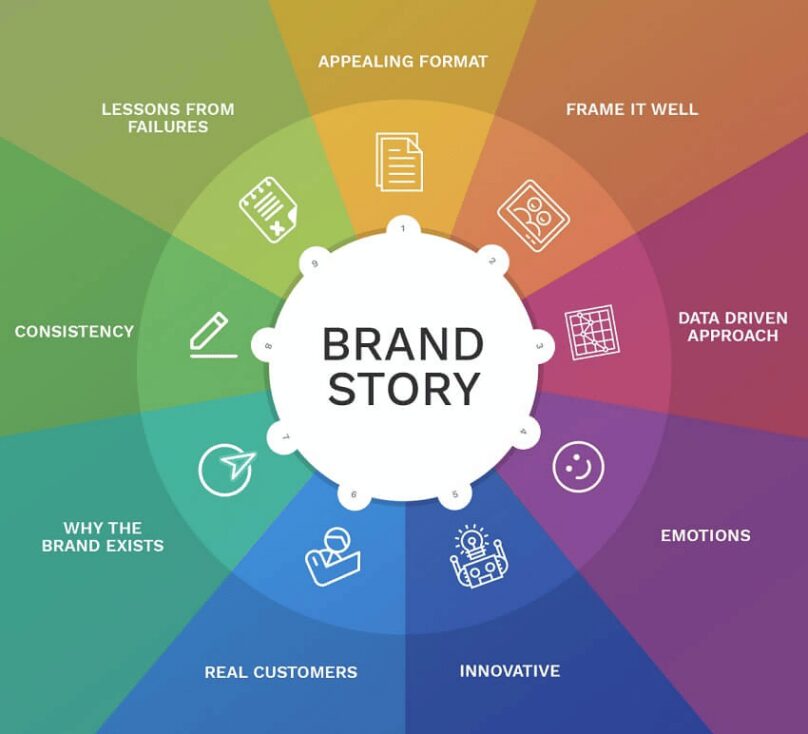Over the decades, the customer base and, in turn, businesses around the world have evolved. Businesses began with a barter system to become a full multifaceted journey, ensuring its online and offline availability, user experience, brand story, and brand experience. It has evolved from just producing and selling a product to reiterating through storytelling narrative the benefits of buying a particular product.
As companies navigate this dynamic landscape of looking beyond just selling, there is an emphasis on authenticity, personalization, and emotional connection with their customer base. Brands are not just selling products; they are crafting experiences that leave lasting impressions, much like a vacation to your favorite spot.
The ultimate goal may still be selling, but the journey from the consumer discovering the product to buying it is intensive. If you are a brand that is just starting or wants to accelerate your brand experience, a brand consultancy agency would assist you in finding your niche. Until you find brand consultants suitable for you, here are six approaches to enhancing your brand experience:
Table of Contents
6 Approaches to Elevate Your Brand Experience

The brand experience includes the overall experience of the consumer, beginning with discovering, researching, engaging, and ultimately buying. In 2024, consumers will be aware, know what they want, and focus on more than just buying the product. It seems like a lot of work to accommodate customer needs and the brand’s identity. Let us break it down for you using a segmentation strategy.
Segmentation involves dividing a group of targeted consumers from a larger market into smaller sets that share similar needs, requirements, or desires. Then further organize these smaller sets into categories to recognize which approach will help them with their requirements.
1. Promote your Brand Story

How it came to be is the basic foundation for a brand experience. When you tell your narrative, if you started from your home garage with a vision and you have reached here, it reveals your hard work. Your brand story becomes the defining factor in how your audience perceives you. You can narrate a two-part story one: your story of how you began and grew, and the second, how the story unfolded after the customers recognized your brand. Now that you have brought this brand to life, your customers have become a part of this journey. Involving them using strategies like asking for customer testimonials, referrals, and reviews gives them a sense of belonging.
2. Be a Trusted Friend
A trusted friend is a reflection of authenticity and reliability. When you point out a problem to your friend, instead of getting offended, they listen to you and consider your opinion. A customer looks for similar traits in a brand. Therefore, follow whatever a trusted friend would do if their friend needed a particular thing. Research your targeted audience and actively engage with them. This will give you data regarding what matters to them. Then contemplate a plan to approach their needs and make it accessible to them. When you proactively reach out to your audience, it increases your touchpoints, in turn making you a credible brand.
3. A well-tended Garden
Sowing your seeds, watering them, and ensuring they get enough sunlight are the basics. When it sprouts and becomes a plant, then comes the nurturing stage. Similarly, for a business, it is important to stay consistent with its own needs and to be visible to the world at the same time. The visibility and reputation of your brand go hand in hand. It involves providing a consistent experience throughout, both online and offline, on different platforms and in different locations. A consistent nature gives you touchpoints with consumers for practicing the same standards at every level.
4. A Memorable Experience
A memorable experience can be good or bad. A brand that wants to appeal to its customers’ needs can do this by persistently asking them for feedback, good or bad. Good feedback will add to your credibility, and bad feedback will open room for improvement. Feedback can be of different types and formats, depending on the situation. For example, live feedback can assist you in gaining insights into your consumers’ minds right after their purchase. Not only customers, but you can also take insights from your employees who live and breathe that journey with you. Feedback should be prompt and engaging, which motivates users to fill those gaps instead of dreading them.
5. Record your Customer’s Journey

When you build a community of customers that consistently engage with your brand, recognize them. As a brand, a customer’s interaction with your business creates value. Add these customers to a common group where they can engage with fellow customers and the brand. Ask this group of customers for video testimonials like unboxing the product, reviews, and photos to post on your website or social media pages. Engage them in the responsibility of referrals or conduct contests and giveaways. Accommodating their requirements rewards you with a considerate brand identity.
6. Humanize your Brand
When you personify your brand, it becomes easier to identify what you can do to improve the experience of your customers. We, as humans, seek people who listen to us, so apply the same mentality in this equation between the brand and the customer. When a customer complains, take action; when they appreciate, be grateful; and reach out to your customer as if your brand were a human. When you listen to what your customers need from your product or service, you are likely to deliver it with much more precision. The goal ultimately may be to sell but with care.
End Note
The business world may be evolving, but one thing that has survived is a customer’s need for a brand to deliver how they want products or services to be. Therefore, there are many approaches, including the ones we discussed above, to enhance your brand experience and offer quality products or services to your customers.













